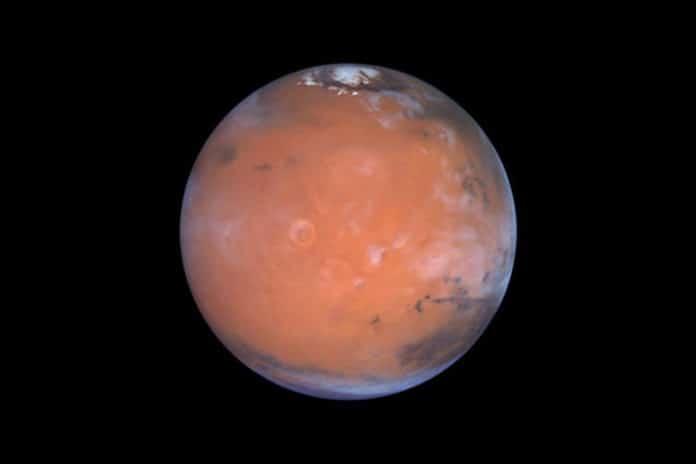The possibility of life on Mars is a subject of huge interest. When searching for life beyond Earth, scientists commonly follow the water.
In 2018, scientists reported a subglacial lake on Mars, under the ice at Mars’s south pole. It was presumed to be a body of saltwater some 20 km (12 mi) across.
Now, additional observations confirmed the presence of that lake — and found three more. The lakes are spread over about 75,000 square kilometers. The largest, central lake measures 30 kilometres across and is surrounded by three smaller lakes, each a few kilometers wide.
Scientists used a radar instrument on Mars Express called the Mars Advanced Radar for Subsurface and Ionosphere Sounding (MARSIS) to probe the planet’s southern polar region. MARSIS sends out radio waves that bounce off layers of material in the planet’s surface and subsurface.
The way the signal is reflected indicates the kind of material present at a particular location — rock, ice, or water. A similar method is used to identify subsurface glacial lakes on Earth. The team detected some high reflectivity areas indicating bodies of liquid water trapped under more than one kilometer of Martian ice.
Although Mars’ surface was periodically wet and could have been hospitable to microbial life billions of years ago, if such reservoirs exist, they could be potential habitats for Martian life.
But the amount of salt present could pose problems. It’s thought that any underground lakes on Mars must have a reasonably high salt content for the water to remain liquid. Although this far beneath the surface, there may be a small amount of heat from the interior of Mars, this alone would not be enough to melt the ice into water.
John Priscu, an environmental scientist at Montana State University, said, “Lakes with salt content about five times that of seawater can support life, but as you approach 20 times that of seawater life is no longer present. There’s not much active life in these briny pools in Antarctica. They’re just pickled. And that might be the case [on Mars].”
Elena Pettinelli of Italy’s Roma Tre University said, “Here we have not just an occasional body of water, but a system. The system was probably existing a long time ago, when the planet was very different, and this is maybe the remnant of that.”
The discovery, reported on 28 September in Nature Astronomy.
